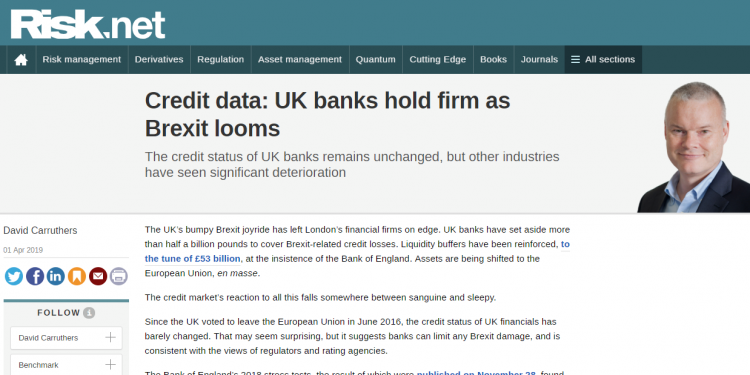
The UK’s bumpy Brexit joyride has left London’s financial firms on edge. UK banks have set aside more than half a billion pounds to cover Brexit-related credit losses. Liquidity buffers have been reinforced, to the tune of £53 billion, at the insistence of the Bank of England. Assets are being shifted to the European Union, en masse.
The credit market’s reaction to all this falls somewhere between sanguine and sleepy.
Since the UK voted to leave the European Union in June 2016, the credit status of UK financials has barely changed. That may seem surprising, but it suggests banks can limit any Brexit damage, and is consistent with the views of regulators and rating agencies.
The banking sector is the exception, not the rule. The credit status of other large UK industries has turned sharply negative since the referendum. Consumer services and industrials have seen the largest downgrades, with only telecommunications showing any material improvement.
In this series of monthly articles from Risk.net, David Carruthers, head of research at Credit Benchmark, reports on the state of UK Large Industries in the aftermath of the Brexit vote. In the US, a comparison of credit trends for Large Financials and Large Corporates, plus a look at the credit distribution of US corporate bonds and borrowers. Also this month, the relationship between national tax revenues and the corresponding sovereign credit risk.
Read the full article using the below link.